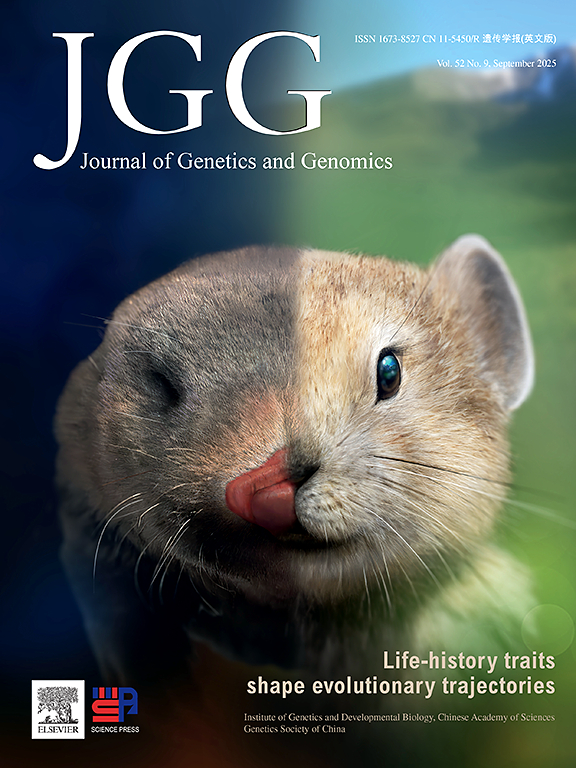Jinyu Wu,
Ping Yu,
Xin Jin,
Xiu Xu,
Jinchen Li,
Zhongshan Li,
Mingbang Wang,
Tao Wang,
Xueli Wu,
Yi Jiang,
Wanshi Cai,
Junpu Mei,
Qingjie Min,
Qiong Xu,
Bingrui Zhou,
Hui Guo,
Ping Wang,
Wenhao Zhou,
Zhengmao Hu,
Yingrui Li,
Tao Cai,
Yi Wang,
Kun Xia,
Yong-Hui Jiang,
Zhong Sheng Sun
2018, 45(10): 527-538.
doi: 10.1016/j.jgg.2018.09.002
Abstract:
Autism spectrum disorder (ASD) is a neurodevelopmental disorder with considerable clinical and genetic heterogeneity. In this study, we identified all classes of genomic variants from whole-genome sequencing (WGS) dataset of 32 Chinese trios with ASD, including de novo mutations, inherited variants, copy number variants (CNVs) and genomic structural variants. A higher mutation rate (Poisson test, P < 2.2 × 10−16) in exonic (1.37 × 10−8) and 3′-UTR regions (1.42 × 10−8) was revealed in comparison with that of whole genome (1.05 × 10−8). Using an integrated model, we identified 87 potentially risk genes (P < 0.01) from 4832 genes harboring various rare deleterious variants, includingCHD8 and NRXN2, implying that the disorders may be in favor to multiple-hit. In particular, frequent rare inherited mutations of several microcephaly-associated genes (ASPM, WDR62, and ZNF335) were found in ASD. In chromosomal structure analyses, we found four de novo CNVs and one de novo chromosomal rearrangement event, including a de novo duplication of UBE3A-containing region at 15q11.2-q13.1, which causes Angelman syndrome and microcephaly, and a disrupted TNR due to de novo chromosomal translocation t(1; 5)(q25.1; q33.2). Taken together, our results suggest that abnormalities of centrosomal function and chromatin remodeling of the microcephaly-associated genes may be implicated in pathogenesis of ASD. Adoption of WGS as a new yet efficient technique to illustrate the full genetic spectrum in complex disorders, such as ASD, could provide novel insights into pathogenesis, diagnosis and treatment.







